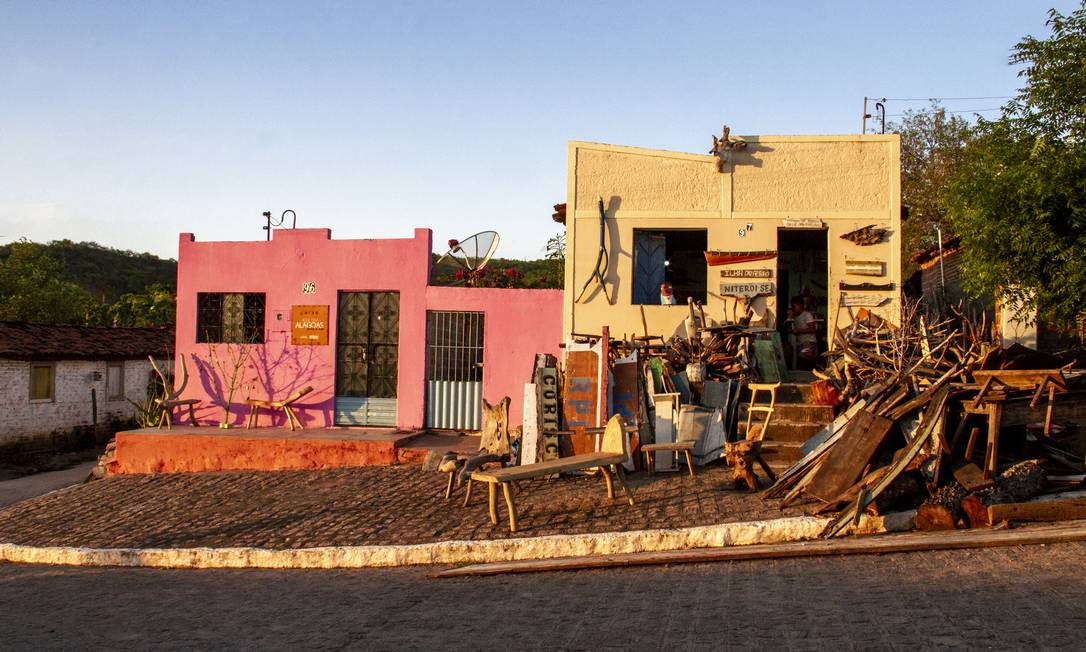
On the banks of the São Francisco River , one of Brazil’s longest rivers, lies a small village that became a landmark for popular art and original design. At the heart of this transformation was a master craftsman, Fernando Rodrigues.
Located in the semi-arid region of Alagoas state, near the border with Sergipe, Ilha do Ferro is a village of fewer than 300 inhabitants where art springs from the dry earth, the roots of native trees, and the unique wood of the local caatinga biome, a type of dry forest found only in Brazil. The landscape is harsh but fertile in creativity. Along the river, the village grew quietly, far from major urban centers, producing works that have traveled across Brazil and reached galleries and museums internationally. Here lived and created Seu Fernando Rodrigues, who turned a forgotten village into a renowned center of Brazilian design.
Despite its name, Ilha do Ferro (meaning “Iron Island”) is not an island. It’s a riverside community with difficult access for many years, marked by drought and isolation. Yet, it was in this challenging environment that a unique art form developed without formal schooling or access to sophisticated materials.
For decades, residents survived on fishing, subsistence farming, and small-scale livestock. Over time, they began creating objects from what was around: reclaimed wood, roots, vines, seeds, and gourds. Initially, these were benches and functional items. Gradually, this craft became a distinct artistic language.
Fernando Rodrigues da Silva, known locally as Seu Fernando (“Mr. Fernando”), was born in 1943 and began carving early, without formal training guided only by curiosity and skilled hands.
Legend has it that his work began when a politician came asking for votes, and Seu Fernando told him he would only vote for him if he brought electricity to the village. When electricity arrived, trees had to be cut to install poles, leaving wood scraps behind. Seu Fernando took some of this wood, carved and sanded it into benches, unknowingly starting a new chapter for his life and his community.
In the 1980s, photographer Celso Brandão visited Ilha do Ferro as part of a project for the Théo Brandão Museum. Captivated by Seu Fernando’s benches and artworks, Brandão began documenting the pieces and daily life of the village. In 2017, he published the book Ilha do Ferro, a collection of black and white photos depicting the spirituality, landscape, and people of this semi-arid region.
Seu Fernando shared his knowledge with the community, paving the way for other artisans to be recognized as artists.
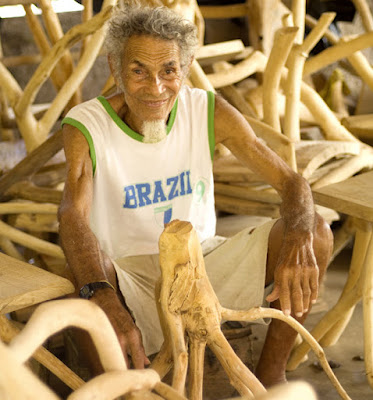
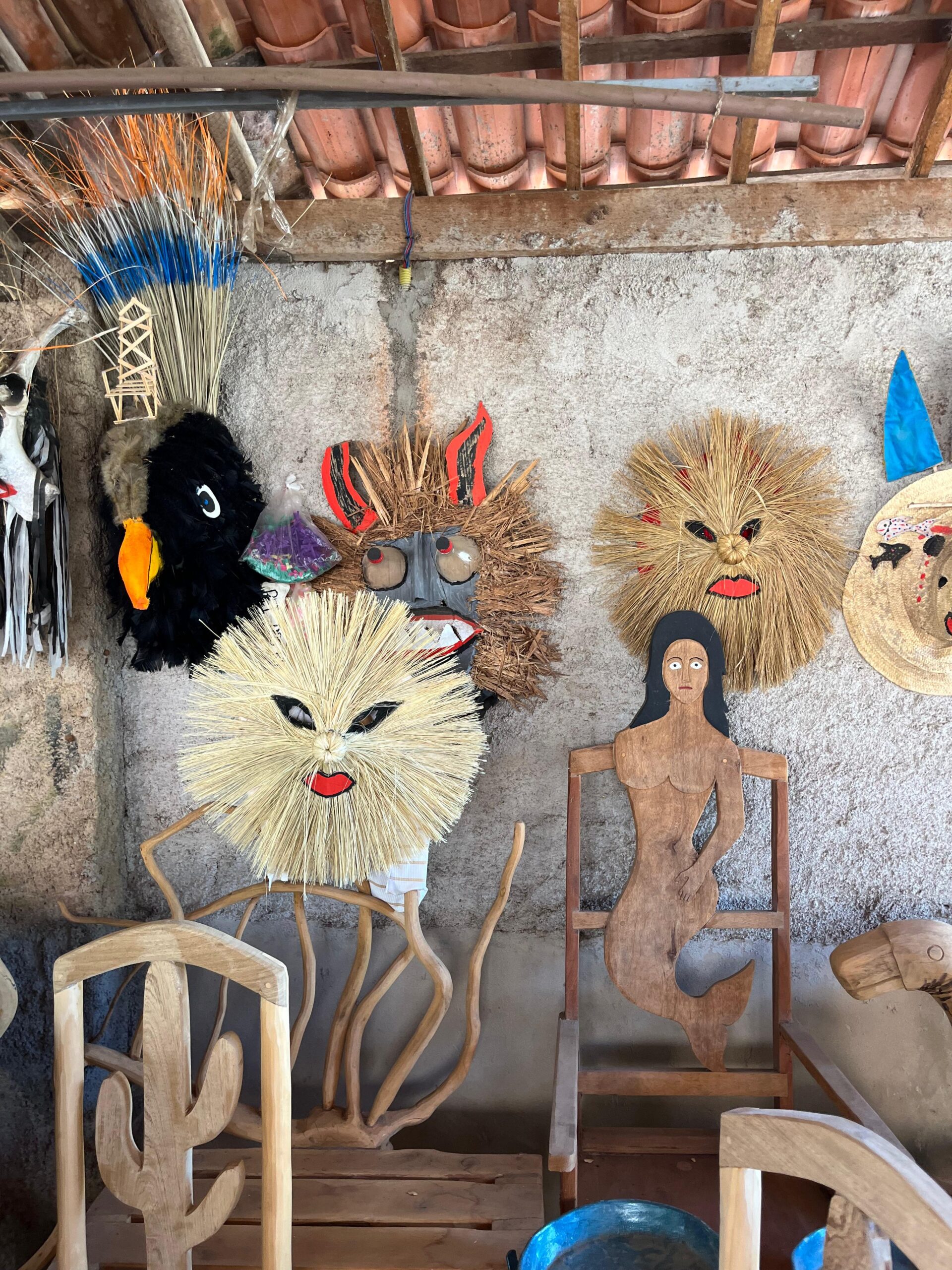
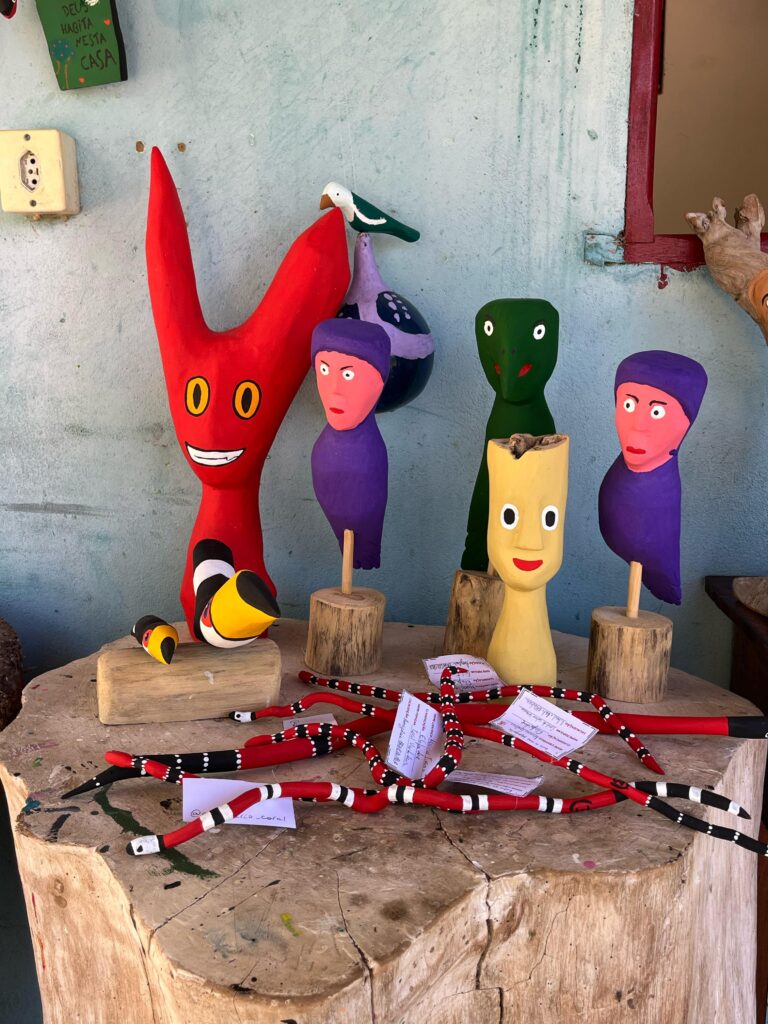
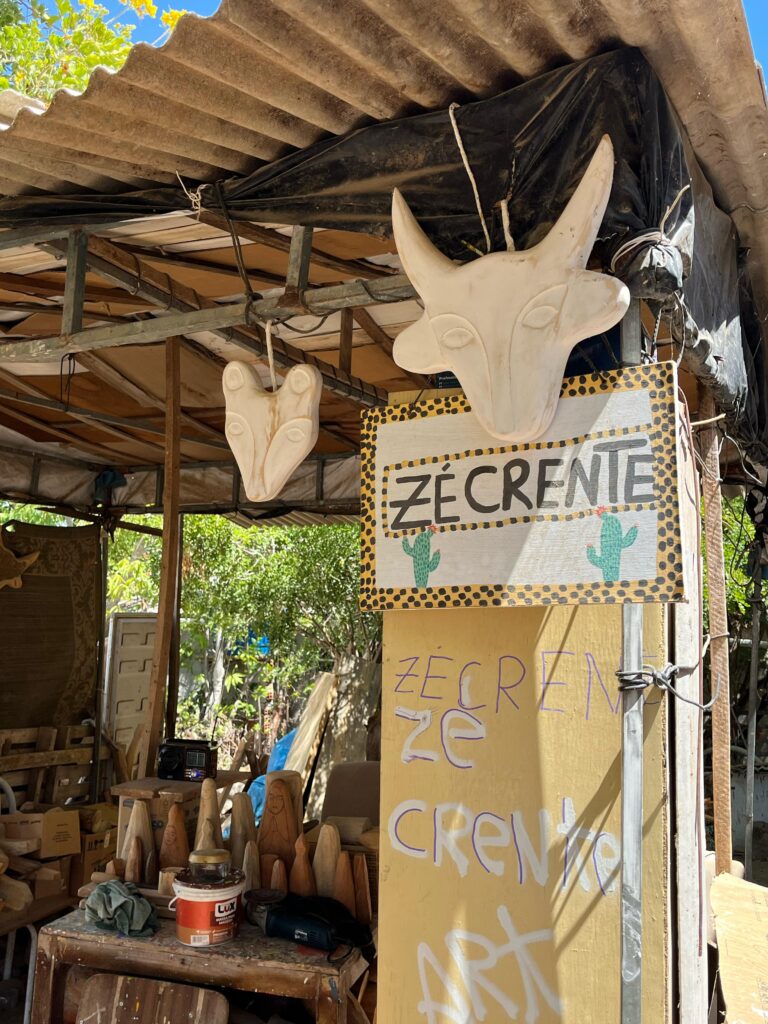
Today, Ilha do Ferro is recognized as one of Brazil’s main centers of contemporary popular art. The style, called vernacular design, blends function, aesthetics, and creative improvisation and continues to thrive. Besides Seu Fernando, who passed away in 2020, important artists such as Cícero Rodrigues, José Bezerra, Erivaldo da Ilha, and women skilled in embroidery and weaving have enriched the visual culture.
The tradition of carved benches continues alongside new materials and techniques, maintaining a deep connection to local territory and nature.
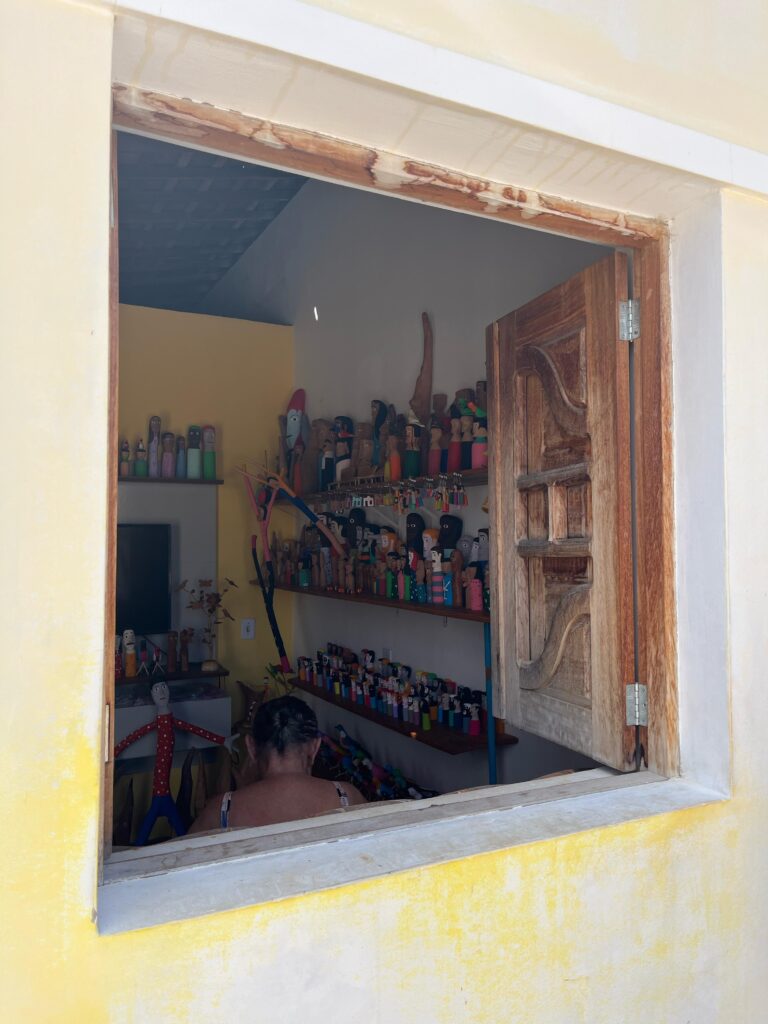
The strength of Ilha do Ferro lies in community. Each piece embodies not only the rugged beauty of Brazil’s hinterland but a philosophy: to create with what you have, honor the hands’ rhythm, and reinvent daily life. This is more than craft. It is identity in wood, fabric, and color.
The island inspires contemporary designers, is studied in art and architecture schools, and attracts visitors eager to experience its unique cultural expression.
Even after his passing, Seu Fernando’s legacy lives on.
More than a craftsman, he was a master of invention.